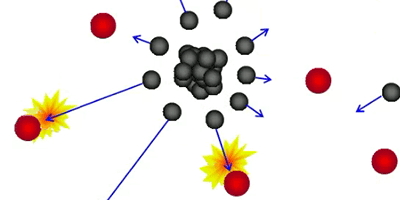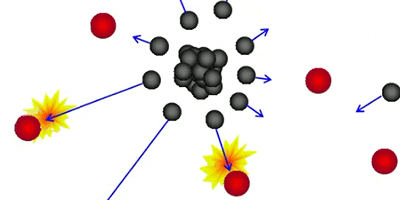Nuclear Reactions in Lab Plasma
Many low-energy nuclear reactions in astrophysics occur in plasmas, in which the nuclei are free of electrons. By contrast, most nuclear experiments involve neutral targets, whose bound electrons produce a “screening effect.” A new technique uses lasers to remove these unwanted electrons so that low-energy nuclear reactions can be studied directly in laboratory plasma. The authors demonstrate their approach in Physical Review Letters on the deuterium/helium-3 interaction that helped synthesize elements in the early Universe and could potentially be used to power a future nuclear fusion reactor.
In a typical nuclear reaction experiment, an ion beam is directed at a target containing neutral atoms. The bound electrons provide a screen that reduces the Coulomb repulsion between the positive nuclei. Therefore, laboratory measurements tend to predict higher reaction rates than would be expected between ionized nuclei. To obtain astrophysically relevant parameters, researchers try to correct their data by estimating the screening effect of the bound electrons.
Marina Barbui from Texas A&M University, College Station, and her colleagues have instead found a way to directly observe a reaction inside a plasma. In particular, they studied the interaction between deuterium and helium-3 that leads to helium-4 and a proton. The researchers used a high-powered petawatt laser to explode apart deuterium molecular clusters, producing low-energy deuterium ions. Some of the deuterium ions collided with slow-moving helium-3 nuclei, which were also nearly completely ionized by the laser pulse. The team measured the effective rate of helium-4 production inside their plasma and found it consistent with other measurements. The group plans to use their method to study other low-energy reactions, such as those involved in the CNO cycle of stars. – Michael Schirber





